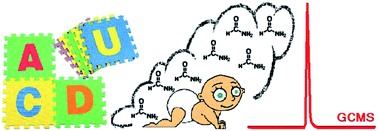Child safety: a validated GC-MS method to determine formamide in EVA foam mats
Abstract
Recent studies on EVA products sold in Europe and manufactured in Asia have shown that puzzle mats and other EVA toys contained up to 1266 mg kg−1 of formamide, a substance classified as carcinogenic, mutagenic or toxic for reproduction. Considering this risk, France has restricted formamide in mats to no more than 200 mg kg−1, while the European Commission accepts 5000 mg kg−1. Since there is no information regarding the formamide content in EVA mats from the Brazilian market, this study aimed to first develop and validate a method for formamide determination, then analyze the best-selling EVA foam mats produced and sold in Brazil. Formamide was ultrasound-extracted three times with methanol to ensure maximum extraction. After the addition of acetamide as the internal standard, the samples were analyzed by GC-MS. This method was fully validated and presented a limit of quantification of 0.19 mg kg−1 of formamide in the chromatographed extract, recovery between 88 and 101% and RSD below 3% for concentration levels higher than 1.5 mg kg−1. Five commercial foam EVA puzzle mats made in Brazil were analyzed and presented 32 to 1364 mg kg−1 of formamide. Subsequent tests showed that usually more than 50% of the formamide amount is released and could be inhaled from the mats in the first two weeks after opening the package. Considering the exposure to formamide demonstrated in this work, we recommend that the Brazilian regulation for toy safety includes a limit for formamide content in EVA foam toys.



 Please wait while we load your content...
Please wait while we load your content...